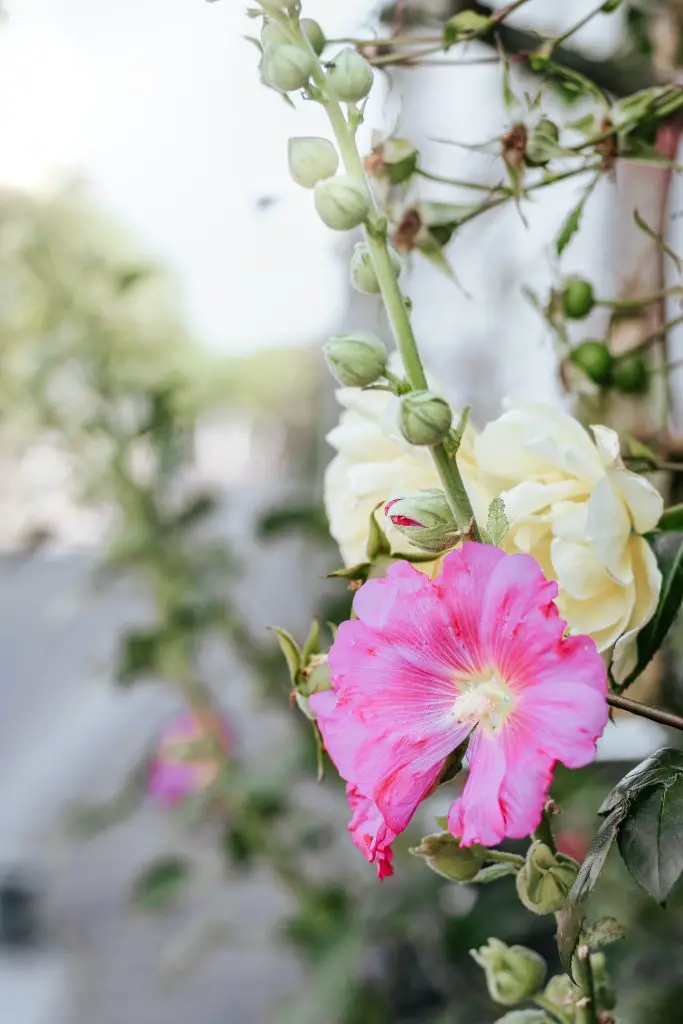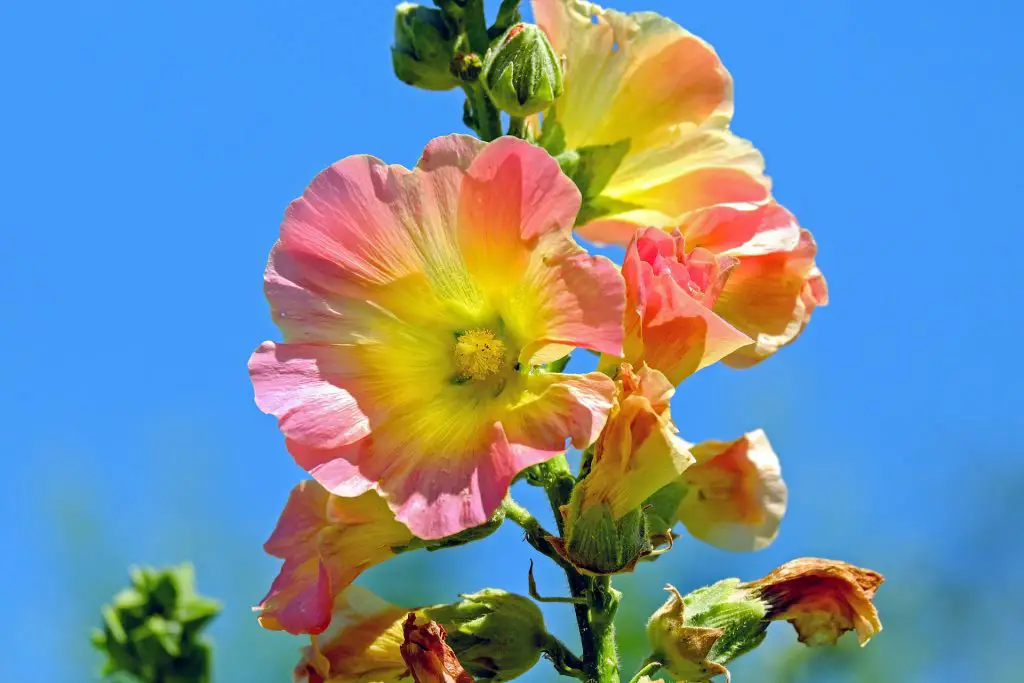Are Hollyhocks Poisonous? Hollyhocks are a popular plant to grow in the cottage garden because they produce tall spires with columns of flowers that make an attractive addition to any garden. But are hollyhocks poisonous like foxgloves?
Hollyhocks are generally not considered to be poisonous according to ASPCA, to dogs, cats, or people, however, a list compiled by the University of California identified hollyhocks as a plant that does cause skin irritation or dermatitis in some people. They have stated that it is advisable to wash the affected area of skin with soap and water as soon as possible and contact the Poison Control Center or your doctor if symptoms appear after contact with hollyhocks.
At first glance, this may not sound all that good, however, when you compare them to similar flowering plants that also produce tall flower spikes such as foxgloves and delphiniums they are relatively benign. Both these plants are classified as having major toxicity issues that can cause serious illness of death if ingested. These poisons can in some cases pass through the skin into the body so should therefore be handled when wearing gloves.

About Hollyhocks
The hollyhock plant originated in the areas surrounding Turkey and was first introduced to the UK in 1573. The variety Nigra which has distinctive black flowers was first described in 1629. The plant was initially grown for medicinal purposes and was used to treat ailments such as tuberculosis.
However, it later become popular as a cut flower and was the subject of breeding programs in the 1800s. The focus of these programs was on double-flowered varieties which had existed for some time but were significantly improved during this period.
One of the most well-known breeders of this period was Mr. W Chater of Essex, who won a large number of awards through this period, click here to see a publication from that period. Many of the varieties developed by him still exist today and can be purchased.
However, breeding programs were halted as a result of the appearance of rust disease in the 1870s which came from South America and affected hollyhocks all over Europe. It wasn’t until the 1930’s that Hollyhocks started to become popular again and started to be used widely in cottage gardens again.

Growing Hollyhocks
Hollyhocks are a biennial plant that grows and develops in the first before flowering and setting seed in the second year. The plants are typically hardy in zones 6 to 10 however there are some varieties that the suitable for growing down to zone 3. To see a selection of different varieties that have different growing conditions click here.
The plants themselves are generally easy to grow and can be started from seed in Spring, however, it is possible to start them even earlier indoors if a heated propagation tray is used. To start the seeds off it is best to fill a seed tray with seed raising mixture. Once the tray is filled the seeds should be planted at a depth of 0.5 inches and then watered in well. The seeds usually take 14 to 21 days to germinate however there are some varieties that can take even longer.
Once the seedlings are germinated they will typically take 4 to 6 weeks to reach a reasonable size, usually 4 inches or so. At this stage, the plants can be planted out in the garden provided that the risk frost has passed. The plants should be spaced approximately 1 ft apart.
In terms of growing conditions, Hollyhocks prefer a location that gets at least 6 to 8 hours of sunlight per day. The soil should ideally be rich, moist, and free-draining, with plenty of nutrients. To ensure that the soil retains moisture it is advisable to apply a thick layer of mulch.
Once the plants are established they generally will require very little maintenance apart from watering and weeding. When the plants begin to flower, in the second year, the flowering period can be extended by deadheading. The plants will also readily self-seed which means over a period of time it will not be necessary for seeds to be replanted every year.
